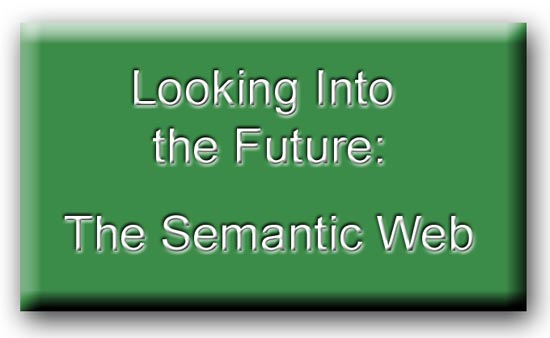

"The Semantic Web will bring
structure to the meaningful content of Web pages, creating an environment where
software agents roaming from page to page can readily carry out sophisticated
tasks for users."
-Tim Berners-Lee, director of W3C

Lucy Makes a Doctors Appointment For Her Mom:
At the doctor's office, Lucy instructed her Semantic Web agent through her handheld Web browser. The agent promptly retrieved information about Mom's prescribed treatment from the doctor's agent, looked up several lists of providers, and checked for the ones in-plan for Mom's insurance within a 20-mile radius of her home and with a rating of excellent or very good on trusted rating services. It then began trying to find a match between available appointment times (supplied by the agents of individual providers through their Web sites) and Pete's and Lucy's busy schedules. (The emphasized keywords indicate terms whose semantics, or meaning, were defined for the agent through the Semantic Web.)
[excerpt from “The Semantic Web,” Scientific American]

URI
A Universal Resource Identifier. URIs are used to express an object or concept.
XML
XML is a markup language where you can make your own tags to describe things. These tags are readable by both humans and computers.
RDF
RDF is a way to express semantic meaning with XML. A subject and an object are each represented by a URI, and the relation is also represented by a URI.
Ontologies
If two organizations have different URIs for the same concept, a human creates an Ontology to relate the two. Software agents access the Ontologies so they can understand that two pieces of data relate to the same concept.
Digital Signatures
Digital Signatures are encrypted blocks of data that computers and agents can use to verify that the attached information has been provided by a specific trusted source. Software agents will check the authenticity of their sources before relying on information or making a transaction.
Chaining Software Agents
For a system like this to work, software agents will need to communicate with each other to share information, schedule appointments, or even make financial transactions. When your agent communicates with another agent, it may in turn have to communicate with other agents to complete your request.